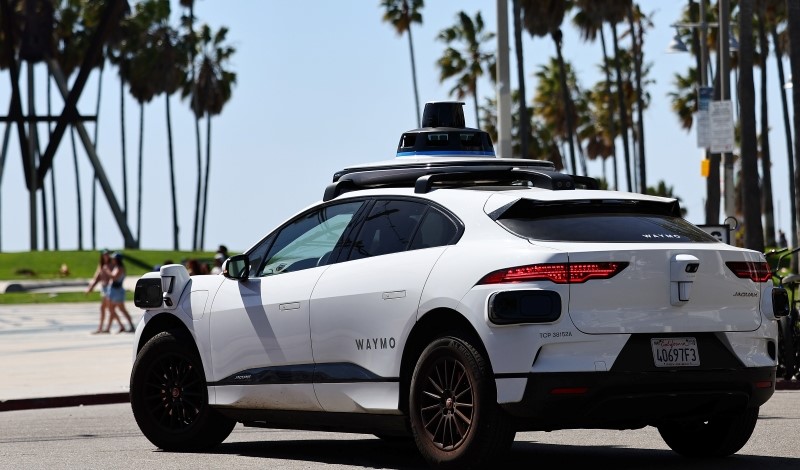
Scholars analyze state driving laws and suggest reforms to regulate automated vehicles.
After an automated vehicle injured a pedestrian in San Francisco, the California State Legislature introduced two bills to clarify who is responsible when a driverless car is involved. With automated vehicles becoming more common, lawmakers are asking this question nationwide.
In a forthcoming article, William Hubbard and Colin P. Starger, law professors at the University of Baltimore School of Law, argue that state driving laws cannot successfully regulate automated vehicles. They pinpoint thousands of state laws that are ambiguous or inapplicable to automated vehicles. After analyzing potential solutions, Hubbard and Starger suggest regulatory reform at the federal and state level to rewrite driving laws to apply to automated vehicles.
Automated vehicles have numerous applications, including transporting those who cannot drive, shipping freight, and delivering goods. But the automated vehicles accomplishing these tasks perform at different levels of automation and operation, creating varied regulatory needs that differ from those of human-operated vehicles. Hubbard and Starger illustrate this problem by analyzing Maryland’s driving laws and regulations.
Hubbard and Starger examined 70,000 Maryland laws and found 303 that need reform to regulate automated vehicles. When investigating the use of the terms “driver” and “operator,” they found an additional 539 laws that need revision. Hubbard and Starger argue that these terms are problematic because laws that target a human driver may not apply to an automated vehicle system.
For example, a Maryland regulation requires school bus drivers to meet an age requirement, pass medical examinations, and wear seatbelts. Laws with such a narrow scope would not apply to automated vehicles. Laws regarding alcohol, children, and education also create policy issues because lawmakers have yet to decide the role of automated vehicles in these areas.
Hubbard and Starger claim that Maryland’s geographic diversity, transportation systems, and vehicular laws are representative of the United States, allowing them to extrapolate their findings to suggest that “at least 42,100 laws nationwide require reform for successful automated vehicle deployment.”
Hubbard and Starger discuss the current status of automated vehicle reforms at the state and federal level before providing suggestions on future regulatory steps. At the state level, they find that “between one-third and one-half of the states have adopted reforms intended to make some aspect of automated vehicle deployment possible.” These reforms include general changes, such as allowing for widespread automated vehicle usage, and structural modifications, such as protocols for accident reporting and dealing with features unique to automated vehicles.
The issue, according to Hubbard and Starger, is a blatant lack of uniformity. Not all states have redefined terms such as “driver” to account for automated vehicles, and among those that have, the definitions are not cohesive. For example, some states define a driver as the owner or registrant of the vehicle, others as the automated driving system itself. These discrepancies, Hubbard and Starger argue, create a “patchwork problem” of uncertainty between states.
At the federal level, Hubbard and Starger contend that the U.S. Congress and federal agencies can undertake cohesive reform. The U.S. Department of Transportation’s Volpe Center completed preliminary research in 2018 and 2015 examining the Federal Motor Vehicle Safety Standards and the Federal Motor Carrier Safety Regulations, respectively. Both reports identified a need to update regulations but did not suggest specific reforms.
In addition to these reports, Congress has granted federal agencies regulatory authority through equipment safety regulations. For example, the National Highway Traffic Safety Administration can investigate concerns about automated vehicles and requires reporting of automated vehicle crashes. Federal authorities can also use monetary incentives to encourage states to pass specific reforms. The federal government currently uses such incentives to regulate the licensing of commercial drivers, and the practice could be expanded to automated vehicle regulations.
Considering these state and federal efforts, Hubbard and Starger identify three potential paths forward for regulating automated vehicles. First, they consider leaving regulation up to the states, but caution against this approach, finding that states lack the resources and political unity necessary to effectuate beneficial change. Even if states can pass reforms, Hubbard and Starger argue that inharmonious laws between states would lead to confusion.
Second, Hubbard and Starger consider a system where the federal government would adopt automated vehicle regulations that preempt state laws. Although it would be efficient, they find the solution unrealistic because it would require a “massive undertaking” to override thousands of state laws, enforcement issues would arise under varied state implementation mechanisms, and “the political will to implement such a massive change is … lacking.”
Finally, Hubbard and Starger suggest what they call a “Goldilocks” solution: a partnership between federal and state authorities to implement automated vehicle regulations. Under this proposal, federal authorities would develop “best practices” for automated vehicle reform and use financial incentives to encourage states to adopt the proposed reforms.
Hubbard and Starger argue that “a critical first step” is to clarify the legal definitions of driver and operator. Expanding the definition of these words to encompass automated vehicles could improve a significant number of the ambiguous laws that exist. Hubbard and Starger concede, however, that additional regulations specific to automated vehicles may also be necessary.
Ultimately, Hubbard and Starger warn against reliance on state laws written decades before the emergence of automated vehicle technology. Instead, they suggest a federal–state partnership to improve the regulation of automated vehicles, allow the development of new technologies, and revolutionize transportation without sacrificing safety.



